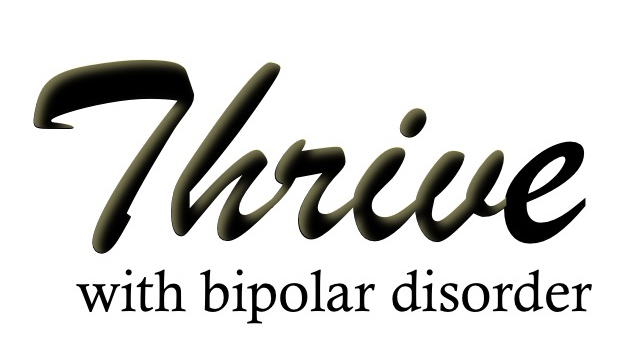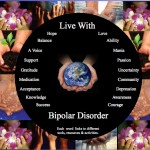Many people believe that to treat bipolar disorder, you just have to get the right medication and the right balance.
That belief simply has never been true for me.
For me, medication prevents mania and prevents mania from getting worse…that is about it.
What follows is my experience of challenges that are consistently present when thriving with bipolar disorder.
Ruminating Thoughts
Ruminating thoughts are thoughts that repeat over and over again that are very difficult to stop. Ruminating thoughts often occur during times of stress, excitement, uncertainty and insecurity.
When I have ruminating thoughts, not only can I not stop thinking about them, but it can be very hard to not stop talking about them as well. The thoughts just sneak out of my mouth. During these times, I do a lot more speaking before thinking. When I experience ruminating thoughts, they often get expressed at inappropriate times, such as 5am or during a romantic dinner.
In all my years of struggling with ruminating thoughts, I cannot say I have “the solution”. However, what helps me is the ability to recognize the “Aha! I am having ruminating thoughts right now”. By recognizing what I am experiencing, I may not be able to stop them, but I can contain them and better keep them from freely flowing out of my mouth.
Emotional Roller-Coasters
I get so sick and tired of emotional roller-coasters. Preventing emotional roller-coasters is a consistent challenge that I face and manage.
I believe that I experience emotional roller-coasters during the same circumstances I experience ruminating thoughts – stress, excitement, uncertainty and insecurity.
What I’ve learned from emotional roller-coasters:
- They start with a fantasy about what “could” happen or “may” be happening.
- My imagination builds on that fantasy creating an entire story around what could happen.
- My emotions don’t know or care what is real, they simply respond to my thoughts.
- My emotions respond to my fantasy as though the story I am telling myself is actually happening right now.
- The emotions then create their own thoughts based on how I am feeling about the fantasy.
As you can see, the journey of an emotional roller-coaster gets further and further from my reality with every thought. Without this awareness of what my thoughts and emotions are doing to me, it is very easy to become delusional.
For many people living with bipolar disorder this can be so severe that they experience severe psychosis in the form of delusions and hallucinations.
Racing Thoughts
Even with medication, I still have difficulty expressing my thoughts at times. Like with ruminating thoughts and emotional roller-coasters…when I am under stress, excitement, uncertainty or insecurity, my thoughts race or get jumbled. During these times I have a difficult time expressing myself. I have taught myself skills to cope with this, but those skills are effective maybe 50% of the time on a good day.
Following the Unspoken Social Rules
Unspoken social rules are my weakness. At times I feel like everyone except me has the “Social Rules Handbook” full of details of all the social rules full of boundaries and appropriateness when with acquaintances. I do not naturally know what is appropriate dinner conversation. At times I feel like an alien watching people wondering “why don’t they just say what they mean or what they really feel?”
What comes naturally to me is to be honest about what I’m thinking and feeling. That does not work for people. I’ve made plenty of people uncomfortable. I truly believe that I am missing that part of my brain that just gets what is socially appropriate.
My research has taught me that my brain may have less mass (depletion) in the part of the brain responsible for picking up on and internalizing the unspoken social rules (anterior and posterior cingulates).
It takes effort to pay attention to how people interact to learn what is appropriate social behavior and what is not and no matter what I learn, it does not come naturally to me.
Thriving with bipolar disorder is not easy, but there is no other option.










